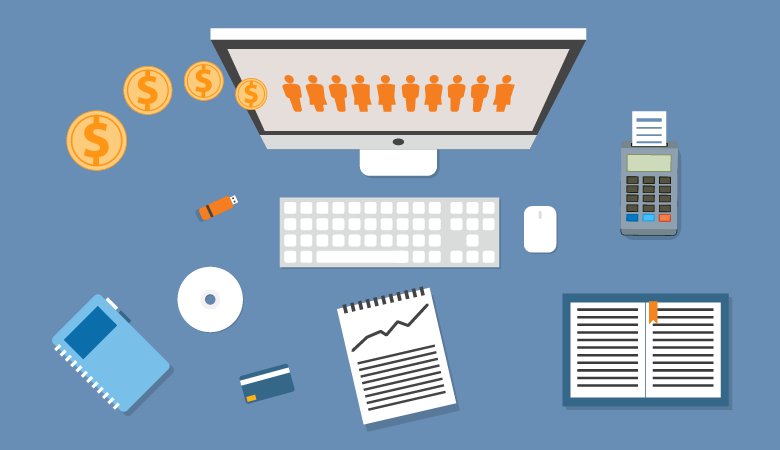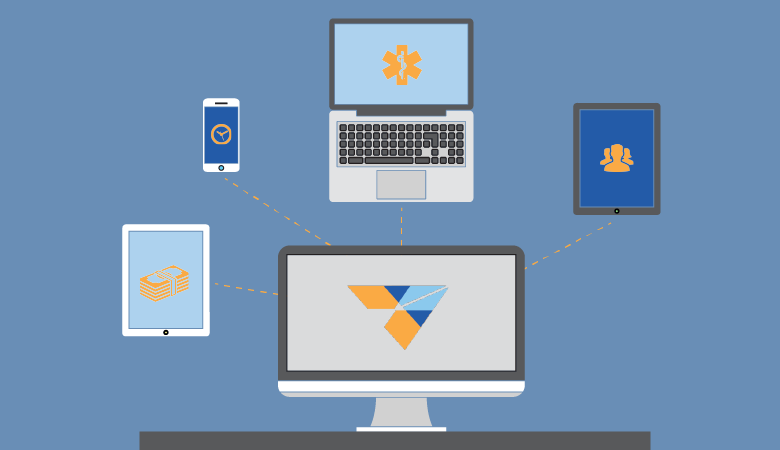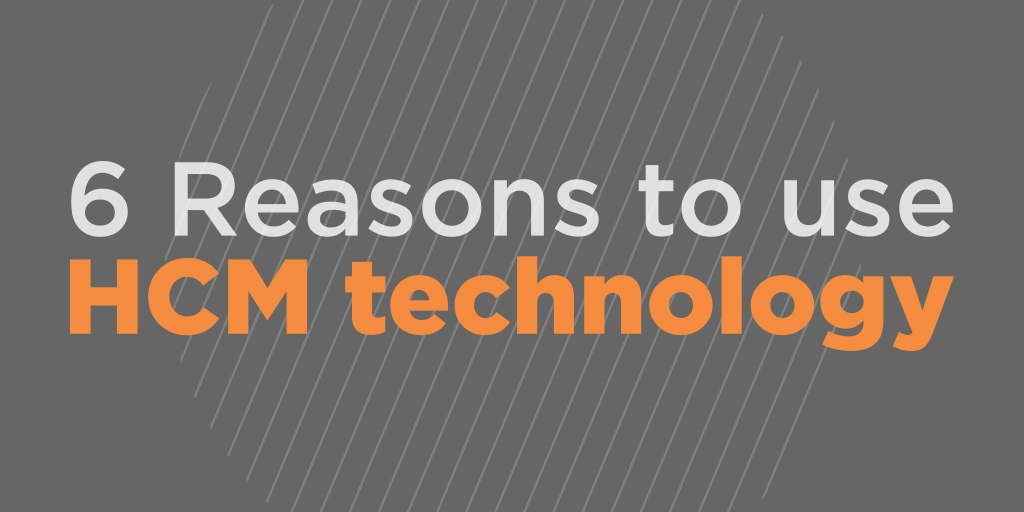
May 24, 2023 | HR Software
Did you know that outdated HR and payroll practices can lead to significant financial implications for businesses? According to a recent industry report, organizations using outdated systems and processes may face increased costs due to errors, compliance issues, and inefficiencies. In this article, we’ll explore the hidden costs associated with relying on outdated HR and payroll practices and highlight how modernizing these processes can result in substantial cost savings.
In today’s fast-paced business landscape, staying ahead requires adopting modern solutions that streamline operations and drive efficiency. This is particularly true when it comes to HR and payroll practices. Outdated systems and processes can impose a heavy financial burden on organizations, impacting their bottom line and hindering growth. Overall It is crucial to develop digital dexterity in today’s business environment
In this article, we will discuss the financial implications of outdated HR and payroll practices, highlight the potential costs associated with errors, compliance issues, and inefficiencies, and provide real-world examples of how modernizing these processes can lead to significant cost savings.
Errors and Inaccuracies
Outdated HR and payroll practices often involve manual data entry and calculations, increasing the likelihood of errors and inaccuracies. These mistakes can result in incorrect paychecks, miscalculated taxes, and non-compliance with labor regulations. Organizations may face penalties, legal disputes, and reputational damage, all of which can be financially draining. By modernizing HR and payroll processes with automated systems, businesses can minimize errors and mitigate the associated costs.
Compliance Risks
Staying compliant with ever-evolving labor laws and regulations is crucial, yet outdated HR and payroll practices can make compliance challenging. Compliance failures can lead to costly fines, audits, and legal repercussions. Modern HR and payroll software solutions incorporate compliance features, automated reporting, and regular updates, helping organizations stay on top of changing regulations and reducing the risk of non-compliance-related expenses.
Inefficiencies and Time Drain
Outdated HR and payroll systems often involve manual paperwork, redundant processes, and time-consuming administrative tasks. This not only hampers productivity but also reduces employee morale and engagement. Valuable time spent on repetitive tasks could be better utilized on strategic initiatives. By modernizing HR and payroll processes, businesses can eliminate inefficiencies, free up valuable time, and allocate resources to more impactful endeavors, resulting in increased productivity and cost savings.
Opportunity Costs
Using outdated HR and payroll practices means missing out on potential cost savings and a competitive edge. Modern systems offer advanced features such as data analytics, employee self-service portals, and integration capabilities. These features enable businesses to identify cost-saving opportunities, make data-driven decisions, and attract and retain top talent. By not embracing modernization, organizations risk falling behind their competitors and losing out on significant financial advantages.
Key Takeaways Summary
- Outdated HR and payroll practices can lead to financial implications such as errors, compliance risks, inefficiencies, and missed savings opportunities.
- Modernizing HR and payroll processes through automation and advanced software solutions can result in cost savings, reduced errors, enhanced compliance, improved productivity, and a competitive advantage.
- Businesses should prioritize modernization to minimize hidden costs, maximize efficiency, and drive growth in today’s rapidly evolving business landscape.
The hidden costs of relying on outdated HR and payroll practices can take a toll on organizations’ financial health. By recognizing the potential risks and embracing modernization, businesses can proactively address these challenges, minimize costs, and position themselves for long-term success and growth in the competitive business landscape. Implementing automated systems and modern HR and payroll software solutions can help organizations streamline their processes, reduce errors, ensure compliance, and increase productivity.
Interested in how an all-in-one HCM software can streamline your business? Visit https://www.highflyerhr.com/hr-benchmark-quiz/ or call (225) 930-8300 today to see how we can help!

Jun 27, 2017 | HR Department Support, HR Software, HR Solutions, Who Is Highflyer HR
Growing and thriving businesses can’t continue to grow and thrive without additional resources or efficient processes, and that’s where an effective human resource department comes in.
If you can’t afford to hire an additional full-time HR professional on your team, it may be time to consider outsourcing certain human resource functions; not only will you gain the benefits of experienced, efficient operations, but you’ll also free your time and budget to channel your attention where it belongs—back on growing your business.
If any or all of the below ring true for you and your business, it may be time to outsource certain HR functions.
1. When HR tasks are taking an excessive amount of time.
When you are tackling human resource tasks on top of running a business, things are bound to take longer; after all, there are so many hours in a day, and you don’t speak employment law and best hiring practices as a first (or even fourth) language. Enlisting the help of a professional HR workflow consultant means that you have someone well-versed in their industry, and all they have to do is apply it to yours.
2. When human resources are spread too thin.
It often happens as a business grows; HR tasks are often delegated and dispersed among a team of managers and department heads. While this can ensure the responsibilities get done, it can often lead to inconsistency and confusion as employees aren’t sure where to direct questions or report concerns. Having consistent human resources processes, either in-house or outsourced, help clarify job responsibilities and the chain of command. It also helps ensure nothing falls through the cracks.
3. When it’s taking away from your bottom line.
Effective human resources should add value to your bottom line, not take away from it. Outsourcing certain HR functions means you have qualified professionals well-versed in employment law, recruiting techniques, payroll, and benefits management. It means you can trust the job to get done right the first time, minimizing your risks while maximizing your time spent growing revenue, networks, and lead sources.
4. When the human resources department becomes too risky.
The bigger you grow, the more responsible—and accountable—you need to be. From new EEOC requirements to mandatory state and federal compliance, a skilled HR, Benefits and Tax professional has a keen understanding of liability landmines and IRS risks. Considering the cost of one tax reporting violation, one year of outsourced Payroll Tax compliance is a worthwhile investment that carries so many other related benefits.
5. When it’s making your business clumsy.
When your business was small and nimble, you could adjust to change rather quickly, but as it grows, it becomes harder and harder to prepare for growth, challenges, and the occasional rare opportunity. If given a chance to expand rapidly, could your current HR systems handle a massive hiring spree and still be effective?
If you’ve been handling human resources on your own or ineffectively delegated them throughout your untrained staff, now is the best time to have an HR Assessment by Highflyer HR. It’s not too good to be true; it’s just smart business. Don’t just get more things done. Get them all done—correctly, professionally, and efficiently.

Apr 25, 2017 | HR Software, HR Solutions, Who Is Highflyer HR
The field of human resources has become increasingly bureaucratic; paperwork, compliance deadlines, paperwork, payroll, benefits, paperwork—you get the idea. More and more HR professionals spend their time navigating separate software and duplicated data on top of their recruiting, training, and employee engagement efforts. Thankfully, more and more HR teams are turning into single-source software solutions to streamline employee onboarding, payroll, benefits, employee tracking, and many other branches of HR work.
While a company’s specific needs and size will play a role in choosing the right software, there are some universal components from which all HR departments can benefit.
- HR Software should be easy to use, with intuitive navigation to allow company-wide, strategic collaboration.
- HR software should provide targeted reports and analytics aimed at helping manage their employees more effectively.
- HR software should be accessible from any device and anywhere in the world. This minimizes downtime and increases the ability to make strong decisions based on the most current information.
- HR software should include all the major facets of the department, including applicant tracking, time and attendance management, benefits enrollment, applicant and employee tracking, and payroll.
Highflyer HR’s iSolved software combines the necessary functions of human resources into one interactive app for professionals. iSolved provides full payroll reporting opportunities, time and attendance trackers for each employee and field, automated benefit processing, new hire reporting, and more. iSolved brings all aspects of HR together seamlessly to ensure the easiest most complete reporting and tracking.
Our goal at Highflyer HR is to make sure your business begins and ends with Human Resources. Easy to use, iSolved streamlines the staggering list of HR responsibilities into a single-source software that cross-references information, profiles, and goals, freeing up time for HR departments to focus less on resources and more on humans.
And we call that a win-win.
Not convinced iSolved is the program for you? Click here to take the software for a test drive.
As mandated by the Affordable Care Act, Section 6106, long-term healthcare providers now must submit staffing information in the form of a payroll-based report. Including the number of employees and total direct care hours worked by these employees, the information reported is used to track the level of staff plus employee tenure, retention, and turnover—all valuable numbers HR professionals of healthcare providers need to know and have on hand.

Apr 14, 2017 | HR Software, Payroll-Based Journal Reporting
Beneficial for both HR professionals in charge of compiling the report and the Centers for Medicaid and Medicare Services who receive the reports, payroll-based journals:
- Allow for the collection of more regular and frequent data.
- Ensure accuracy of data by providing an auditable method of data collection.
- Standardize data collection.
- Inspect the quality of care delivered at nursing homes and other long term service providers by using data.
The payroll-based journal streamlines the recording process for HR managers and holds them accountable to strict time tables. Organization, for HR managers, is key to success. Payroll-based reporting is another tool to help these professionals execute a large part of their job as HR with minimal effort.
Creating a payroll-based journal will require HR professionals to compile data from a number of digital programs. It is important to make sure your software providers understand what is required by the report and what data to provide. Be sure your software partners are willing to assist you in compiling these type of reports.
There is no question as to whether payroll-based reporting will continue to be enforced—it is here to stay. Failure to comply could result in civil money penalties and citations. It is important to create a report that encompasses all employees and utilities used by the healthcare provider with complete and accurate data.
Highflyer HR possesses the resource you need to compile this comprehensive payroll-based journal. Our software is the perfect tool for fulfilling the Affordable Care Act’s mandated payroll journals. We provide users with full payroll previews with anywhere/anytime viewing. We provide HR with end-of-year administrative services processing and automated tax filing.
Highflyer HR is fully integrated with every function required of an HR professional from the payroll records to benefit administration. Want to learn more about our top-notch HR software? Highflyer HR is here to assist.

Mar 24, 2017 | HR Software, HR Solutions
If your current human resource software is causing more headaches than solving them, it could be time for a switch. HR software should be intuitive, consolidated, and accessible; the whole point of a human capital management solution is to create improve time management, accuracy, and the human relationships necessary to drive better employee engagement, retention, and satisfaction.
1) Fit Your End User
Human Resources personnel are more tech-savvy than ever, but that doesn’t make them computer programmers or developers. Before purchasing HR software, it’s always a good idea to determine who your end users are. They could be hiring managers, directors, assistants, legal, security, and employees, as they manage their own benefits and time off. The best HR software on the market is created with specific end users in mind, with intuitive customizations, workflows, and processes.
2) Minimize Gaps. Maximize Efficiency.
Speaking of processes, if your current HR software doesn’t handle every aspect of your department, it’s time to find a software-as-a-service that does. Integration among several programs wastes time, increases the likelihood of errors, and is ultimately ineffective. “We built Highflyer around the fact that HR professionals don’t have time to pull data from several sources,” Craig Broome, President of Highflyer HR. “Single-source technology is the best way to increase efficiency and productivity while minimizing mistakes, missed opportunities, and compliance hassles. And this means human resource teams have more time to focus on the growth and development of their company’s objectives and talent.”
3. Put Human Resources At Your Fingertips
Human resources shouldn’t exist in a vacuum, and its software solutions shouldn’t either. The best HR software uses secure, cloud-based technology that allows you access to the information you need no matter where you are. Your HR software should allow you to manage and approve payroll, timesheets, days off, benefits enrollment, and ACA compliance from your office computer, tablet, and phone.
4. Focus On What Matters
HR software should solve problems, not create them. It should save time for everyone who uses it. It should streamline the onboarding process through automated form fills and secure storage. It should give employees the ability to manage portions of their own benefits and personal accounts. It should keep you apprised of errors, compliance deadlines, and benefits enrollment. It should give you the reporting tools you need to make smart, strategic decisions for your business. In other words, it should work.
When HR software does its job properly, so can everyone else. “We all know that when Human Resources is happy, everyone is happy,” Broome. “Every company owes its success to its people, which underlies the importance of a strong HR department. Give your human resource professionals the right tools, and they can effectively minimize risk, recruit top talent, develop innovative and driven teams, and retain the strong leaders that drive the company forward.”
And that’s why Highflyer is here.

Jun 21, 2016 | HCM Technology, HR Software, HR Solutions, Human Resources Software
Most human resource professionals are well aware of the Human Capital Management (HCM) movement. The right HCM technology will streamline HR processes and save the company time and money, both of which should be considered for your ROI.
A recent Nucleus Research study included companies of various sizes and industries and revealed many noteworthy items that confirm implementing HCM can significantly impact your business.
HCM provides hard savings:
- HCM technology returns an average of $9.13 for each $1.00 spent.
- Initial implementation of cloud-based HCM solutions can cost 79% less than on-premise solutions.
- Companies experience about 90% in savings for ongoing maintenance.
Cloud-based HCM provides everything an employer needs to manage their workforce and is in high demand. With today’s business environment, legislation and technology, employers are challenged to do more than just issue paychecks.
Here are six reasons HCM will benefit your business:
- Cloud-based solutions. HCM technology is extremely cost-effective. Cloud-based HCM applications reduce the need for IT support while providing access from any location, with any device. HCM allows multiple customers to access the same application simultaneously.
- Hardware/software upgrades. The cloud technology’s multi-tenancy architecture assures you of always working with the latest version. No more downtime while updates are processing.
- Data security. Data in a cloud-based HCM system provides secure data effortlessly, maintaining high standards and rigorous adherence to government compliance regulations. Important information is protected using superior firewalls and encrypted transmissions.
- Shorter learning curve. Using a single plug-and-play solution consolidates numerous tasks, leaving more time to focus on vital HR related issues.
- Tracking talent management. HCM platforms can cover the entire employee lifecycle, from hiring, onboarding, to training and even termination.
- Better employee engagement. No matter where employees are located, they can access personal data, benefits information, requests for PTO and payroll, relieving HR from time-consuming data management.
Today’s employers need to save time and money wherever possible. HCM technology has numerous benefits that not only streamline processes but can increase your ROI.







